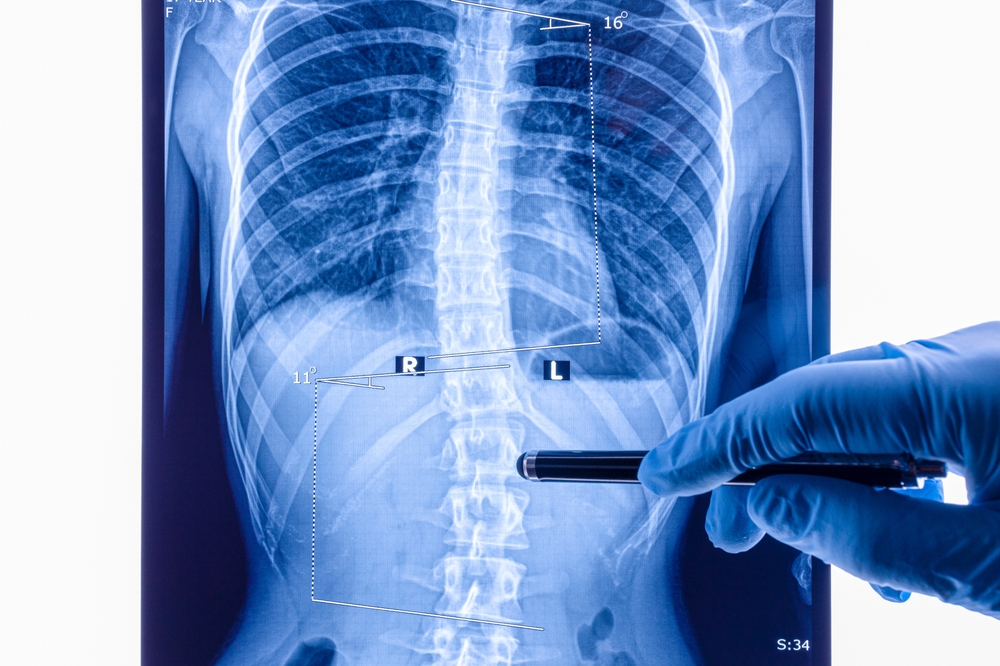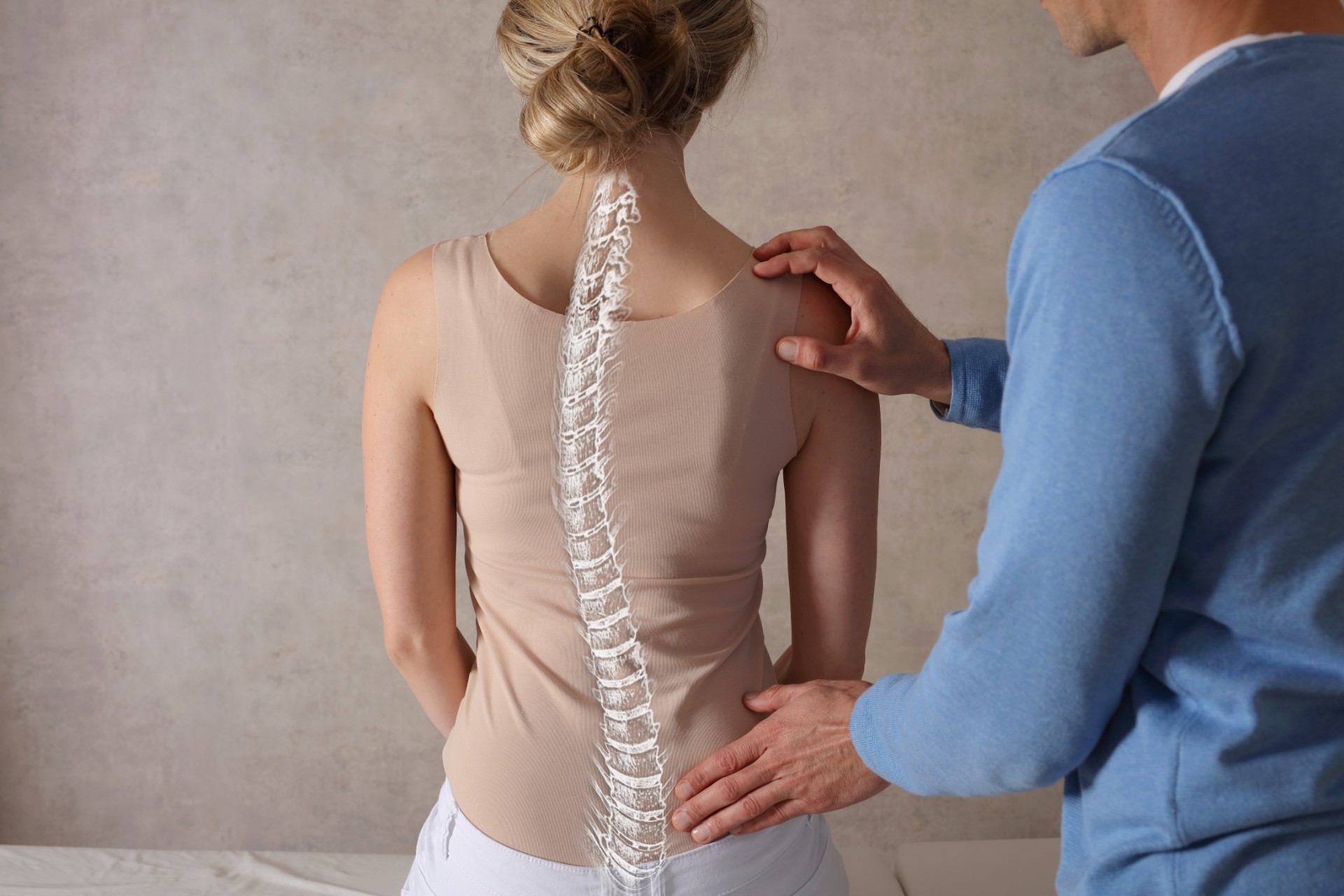Scoliosis, a complex spinal condition, involves a lateral (sideways) curvature in the spine. Unlike the natural front-to-back spinal curves, scoliosis sees the spine taking on a “C” or “S” shape. Our team offers expert insights and treatments tailored to scoliosis patients at Comprehensive Spine Care, P.A., located in Westwood, Clifton, Bridgewater, and Brunswick, NJ.
How Common Is Scoliosis?
Scoliosis is an abnormal curvature of the spine. In younger patients this is typical “Adolescent Idiopathic Scoliosis” and in older patients, it is referred to as “Degenerative Scoliosis.”
Symptoms of Scoliosis
- An uneven shoulder height or one shoulder blade appearing more prominent than the other.
- An uneven waistline or one hip higher than the other.
- A noticeable curve in the spine when viewed from the back.
- Difficulty breathing (in severe cases) due to reduced chest space.
- Persistent back pain or discomfort

Understanding the Need for Addressing Scoliosis
Scoliosis doesn’t just lead to physical abnormalities but can significantly impact a person’s health. If not addressed, the curvature may progress over time, leading to chronic pain, compromised pulmonary function, and an increased risk of spine-related issues in the future.
Moreover, the psychological toll of scoliosis can’t be understated. Those with visible curvatures often face self-esteem and body image issues, particularly during the formative adolescent years. Early diagnosis and intervention can prevent complications, reduce the need for surgical intervention, and offer a higher quality of life.
Lastly, severe scoliosis can impede lung function, leading to fatigue and breathing difficulties. Addressing the condition ensures the individual can lead an active, unrestricted life.
Treatments:
In adolescents, depending on the patient’s age and severity of the curve, observation with periodic x-rays may be appropriate. More advanced curves may be amenable to treatment with a brace depending on the age of the child and size of the curve. Surgery may be necessary for some children to prevent further progression of the curve as the child becomes older.
In adults with degenerative scoliosis surgery is often not needed. Non-surgical treatment includes:
- Anti-inflammatory medications
- Epidural Injections
- When there is a significant disability because of back pain or nerve compression, surgery may be recommended. The spine surgery specialists at Comprehensive Spine Care will develop a treatment plan based on your symptoms, physical exam, and MRI results.
The Treatment Process at Comprehensive Spine Care, P.A.
- Initial Consultation: A thorough evaluation of the patient’s spine, including X-rays or MRI, to determine the degree of curvature.
- Treatment Plan Development: Depending on the severity, age, and progression rate, our doctor will devise a treatment plan, which can range from observation bracing to surgery.
- Implementation: This could involve fitting for a brace, physical therapy sessions, or preparing for surgical intervention, if necessary.
- Regular Monitoring: Periodic check-ups to monitor the curvature’s progression and adjust treatments accordingly.
Prevention and Maintenance
While the exact cause of scoliosis remains unknown, and prevention might not always be possible, early detection plays a pivotal role in managing the condition. Regular spinal check-ups, especially during the growth spurt years in children, can identify any abnormalities early on.
Physical therapy and exercises designed for spinal health can also help manage mild cases and prevent progression. Moreover, those diagnosed with scoliosis should be cautious about heavy lifting and maintain a posture-conscious approach in daily activities.
Lastly, awareness and education, especially in schools and communities, can lead to early detection and timely intervention, significantly improving outcomes.
Positive Outlook Post-Treatment
Once diagnosed and treated, individuals with scoliosis can lead a fulfilling, active life. The key is consistent monitoring and adhering to the doctor’s recommendations. With advancements in spine care, many patients experience reduced pain, improved posture, and enhanced overall well-being.
However, it’s essential to remain proactive in post-treatment care. Engaging in spine-friendly activities, maintaining a healthy weight, and periodic check-ups will ensure the spine remains healthy and the curvature doesn’t progress.
Frequently Asked Questions
What is scoliosis?
Scoliosis involves a sideways curvature of the spine, resulting in a “C” or “S” shape, differing from the spine’s natural front-to-back curves.
How is scoliosis treated at Comprehensive Spine Care, P.A.?
Treatment varies based on the curvature severity, age, and progression rate. We offer solutions ranging from observation and bracing to surgical intervention tailored to individual needs.
Can scoliosis be prevented?
While its exact cause remains unknown, and direct prevention may not be feasible, early detection through regular spinal check-ups can be pivotal in managing the condition and preventing its progression.
Your Journey Towards a Healthier Spine Begins Here
At Comprehensive Spine Care, P.A., we prioritize your spinal health. Our dedicated team, guided by seasoned doctors, is here to offer solutions tailored to your needs. If scoliosis or any other spine-related concern has been a shadow over your well-being, don’t hesitate. Call us today at (201) 634-1811 and take the first step towards a brighter, pain-free future.










